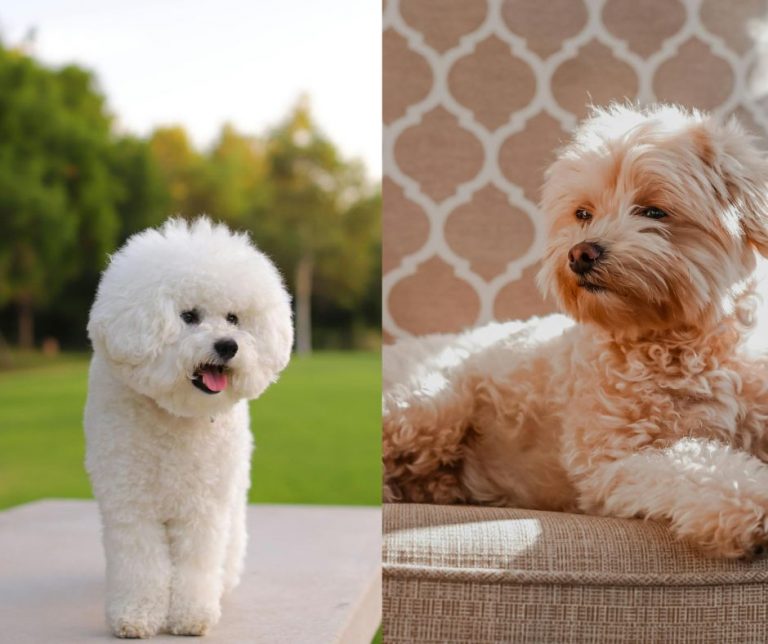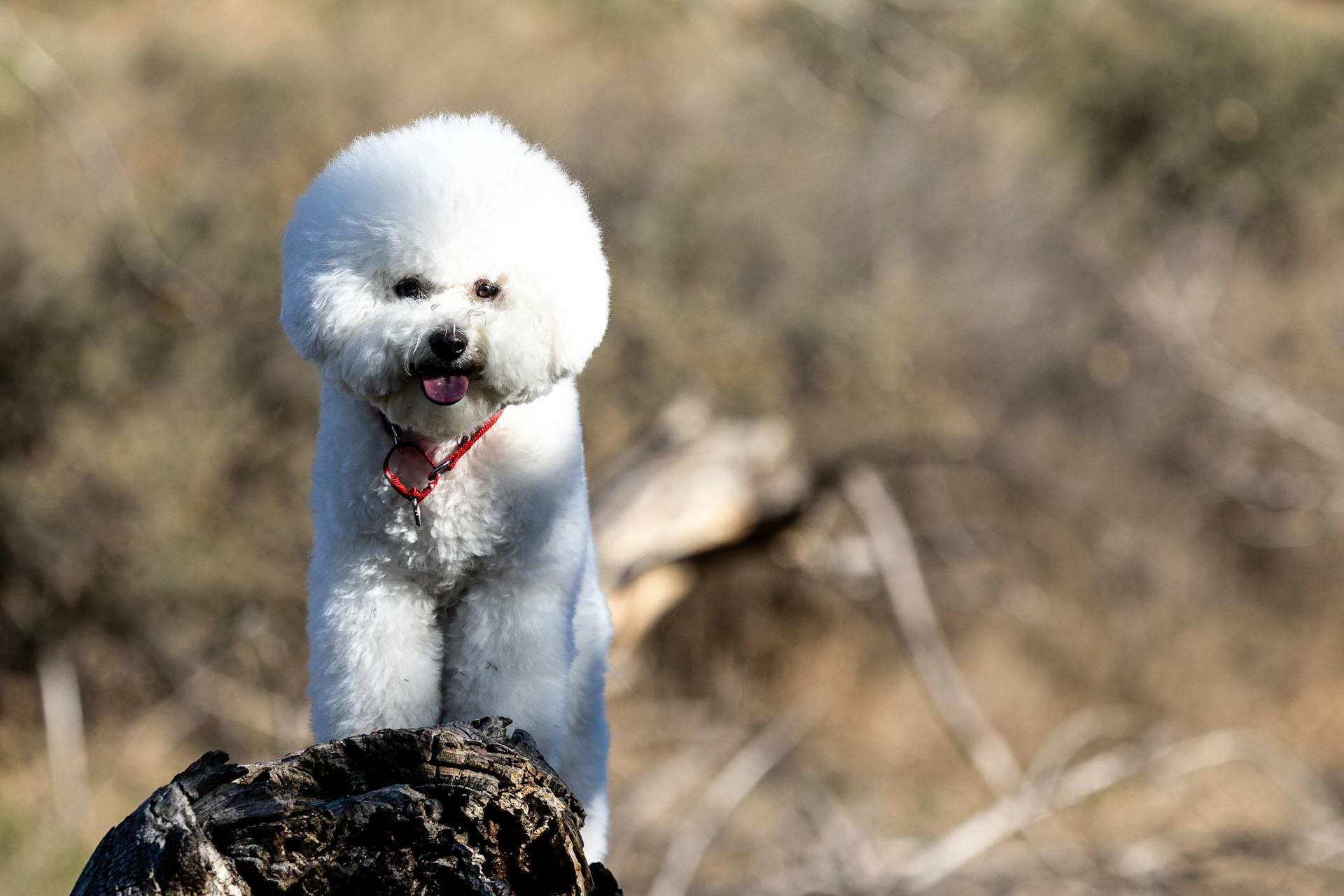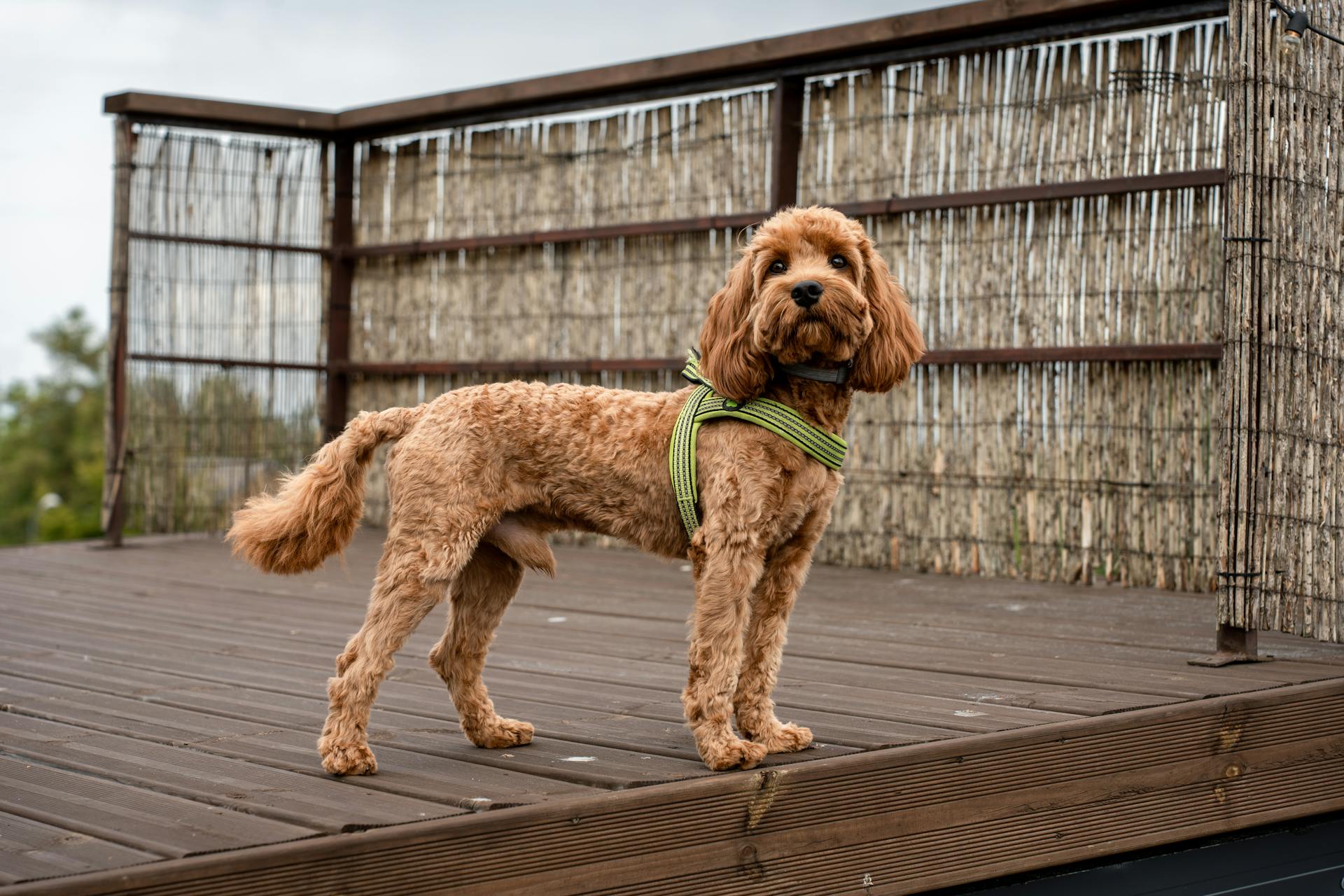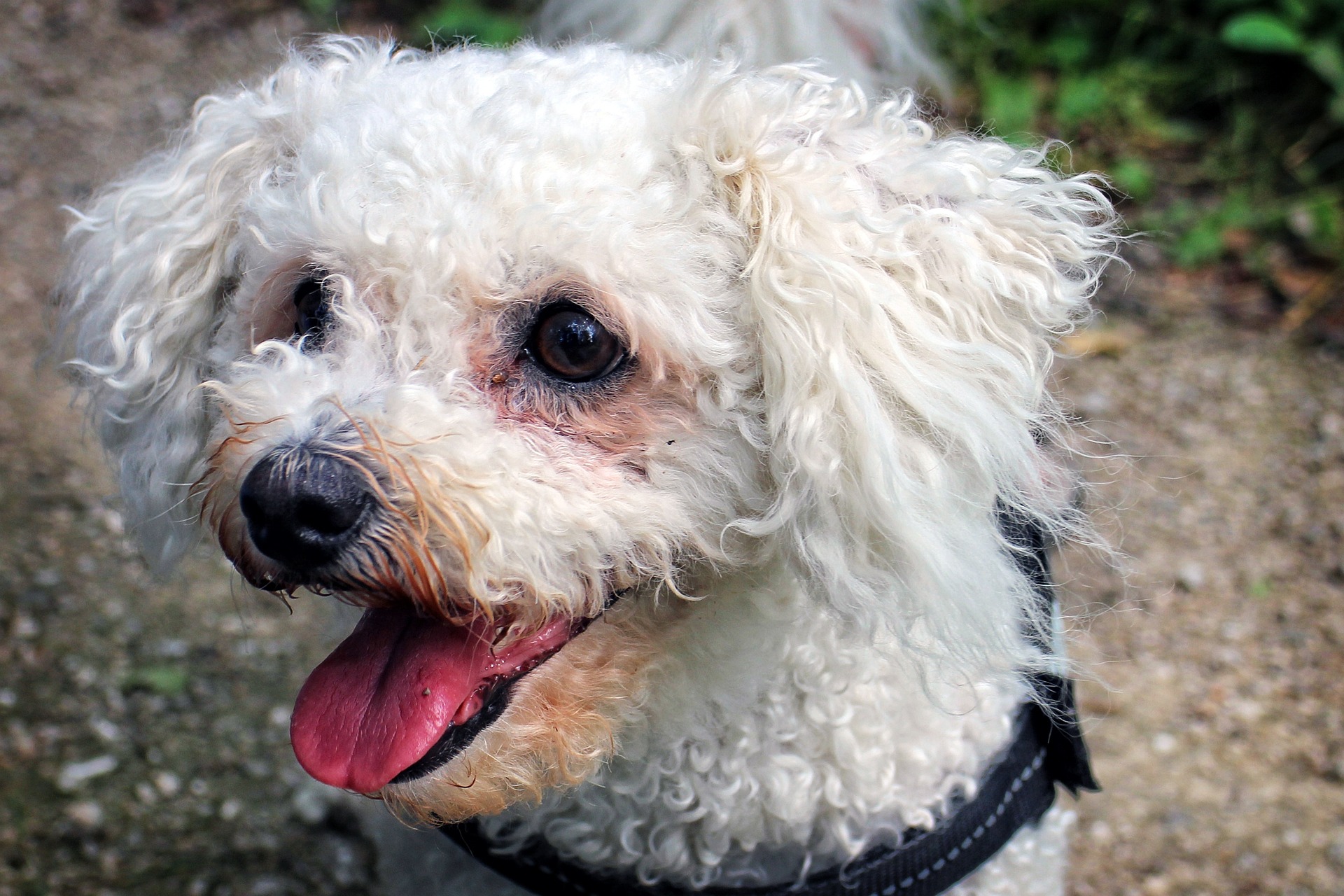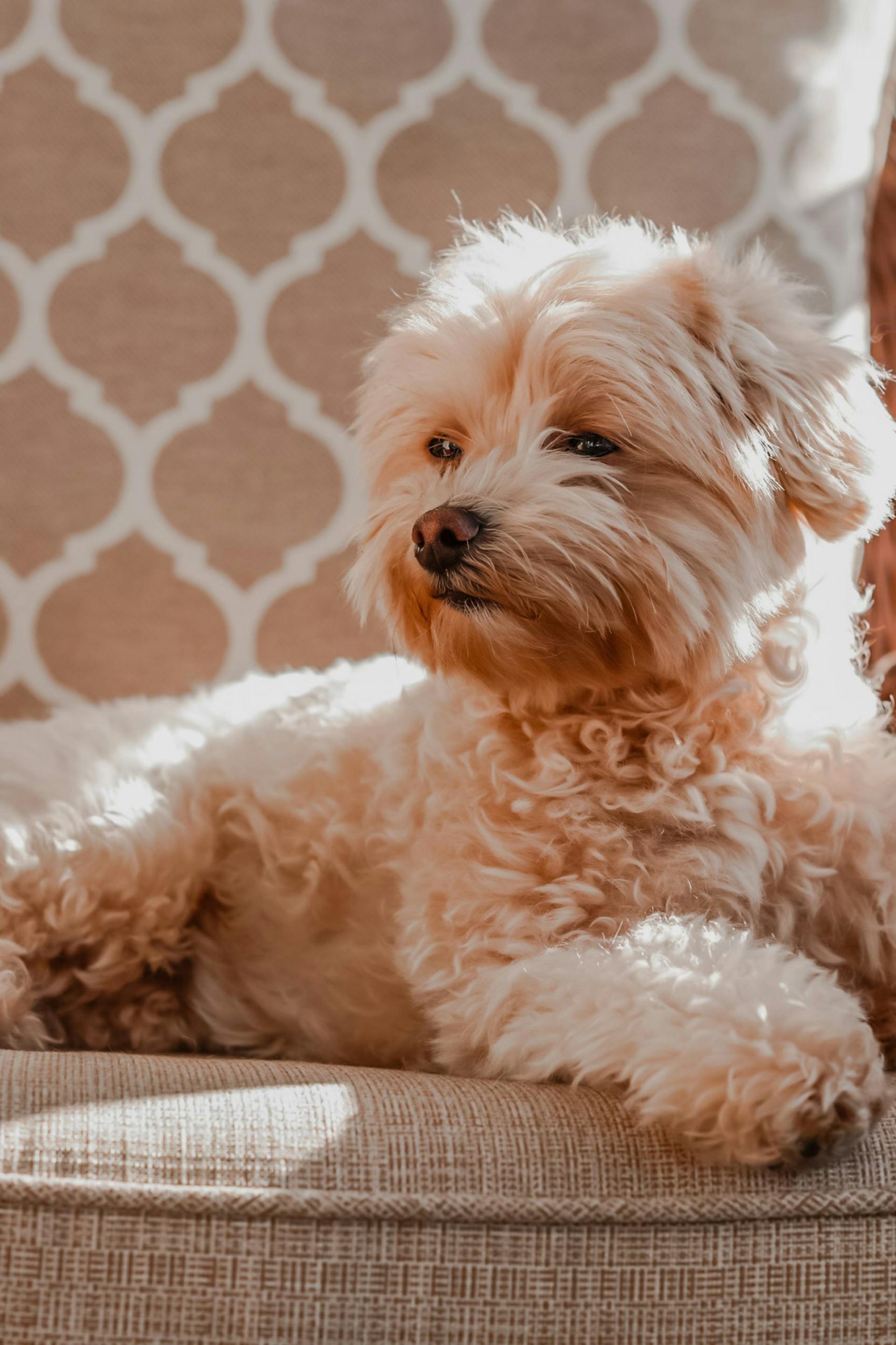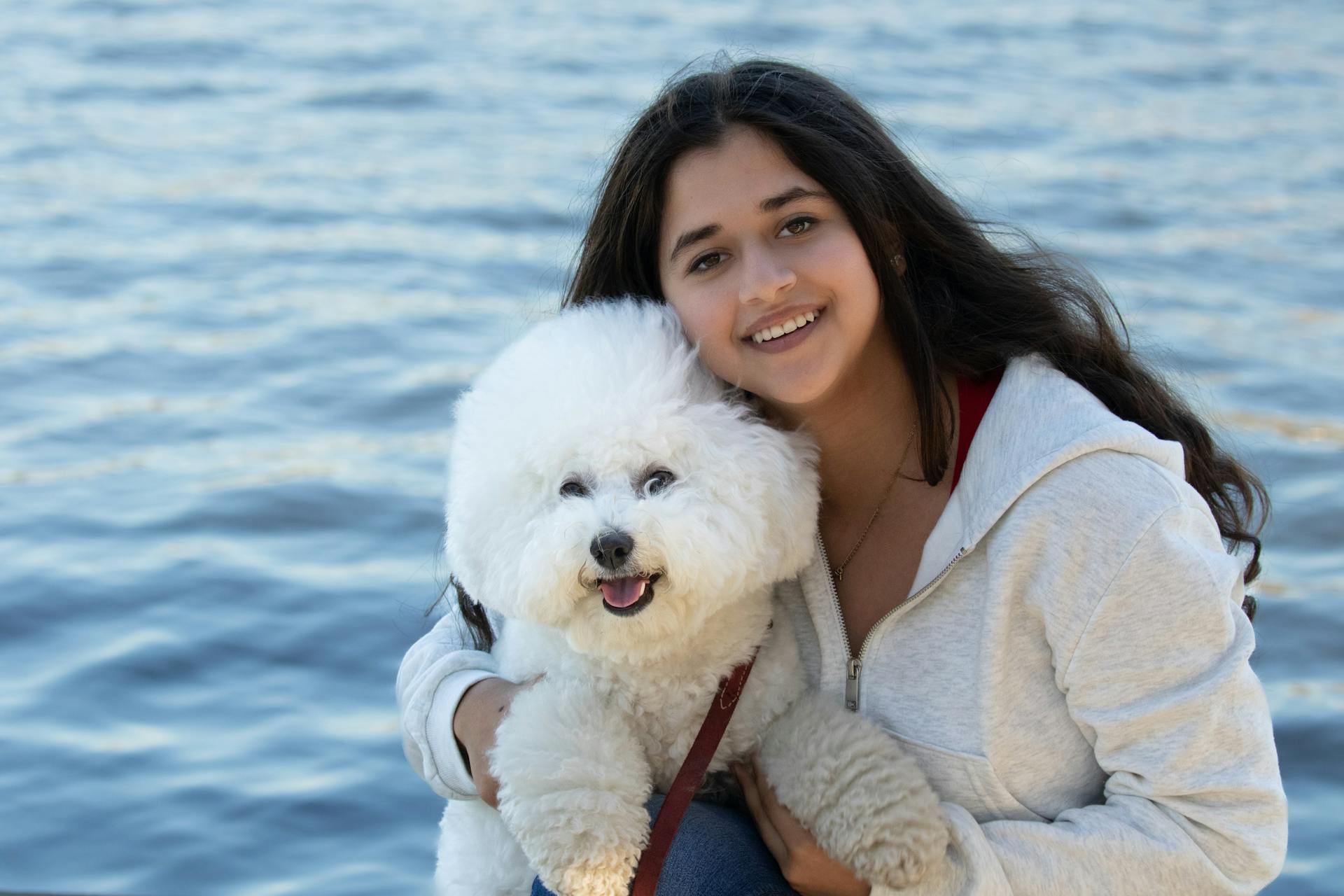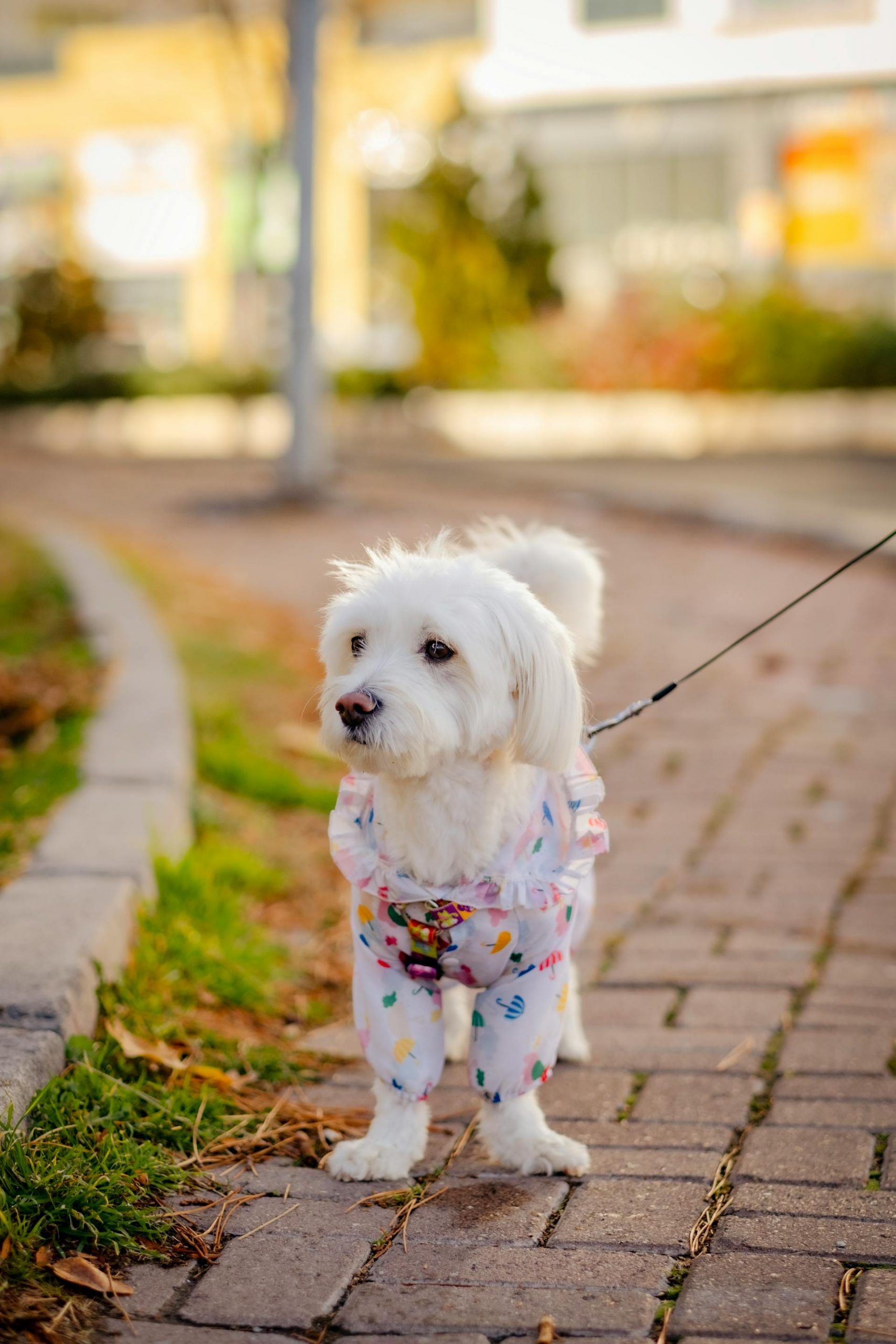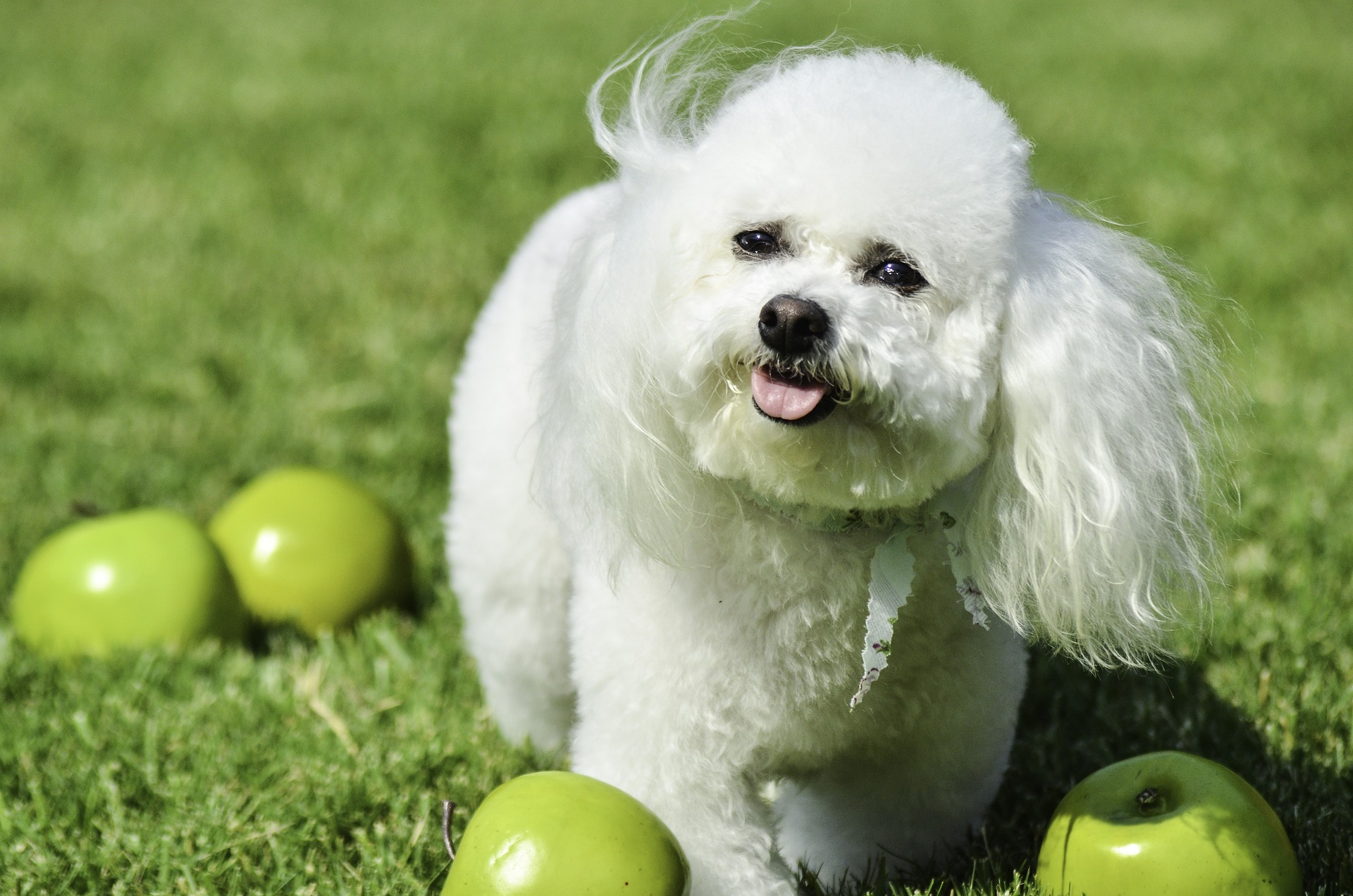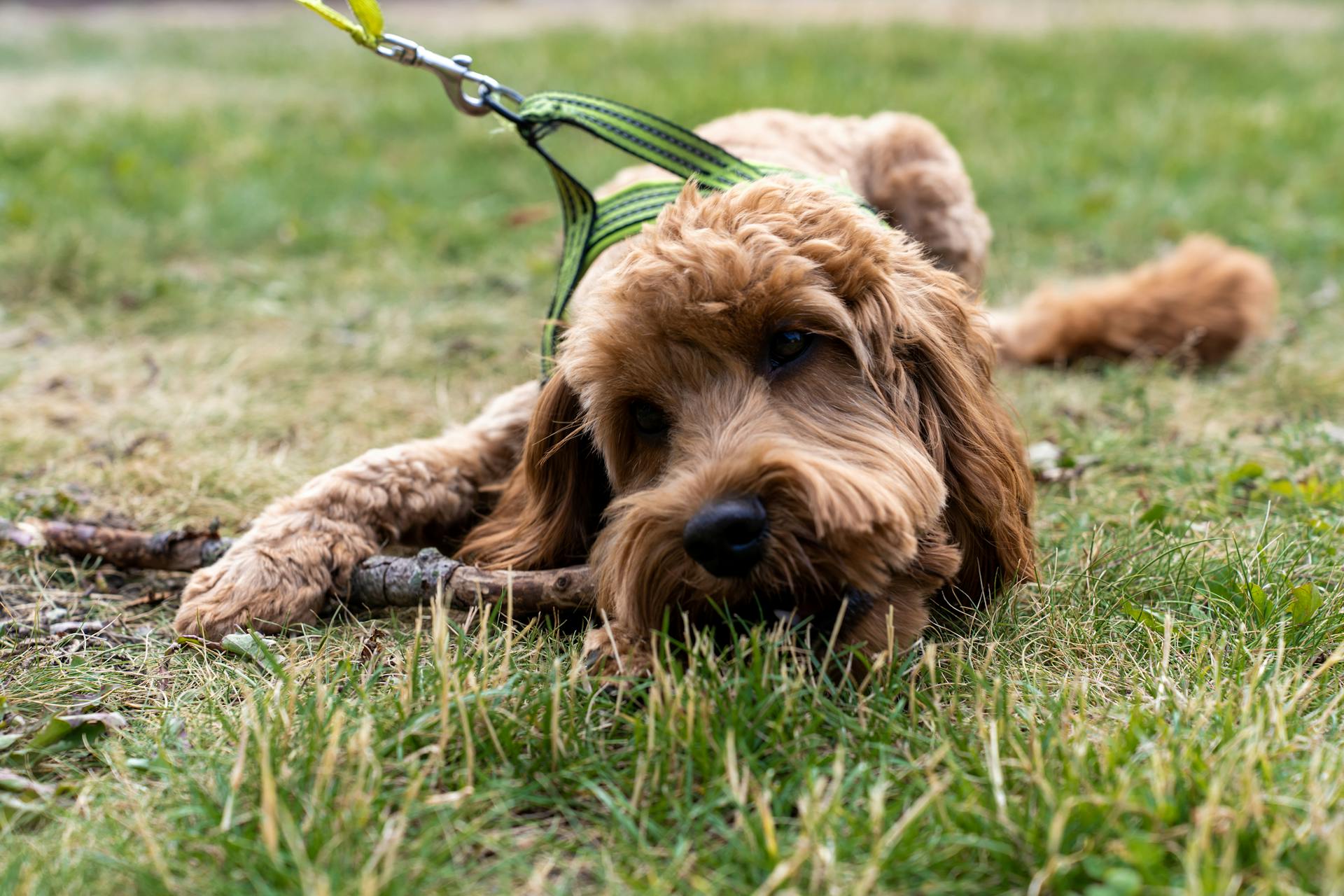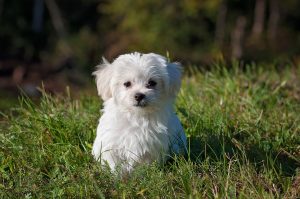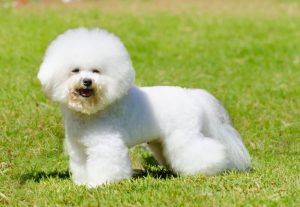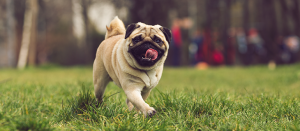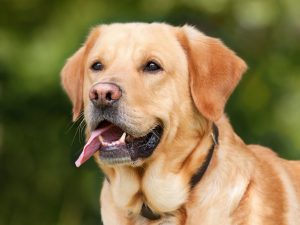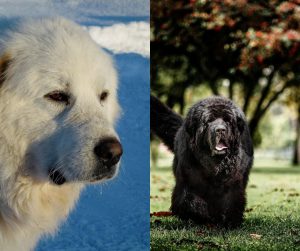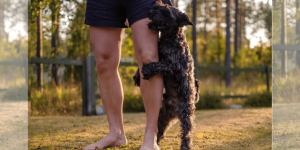When considering a fluffy addition to the family, the Bichon Frise and Maltipoo are both breeds that stand out for being friendly and affectionate companions.
These small dogs are known for their lovable nature and hypoallergenic coats, making them an ideal pet for many households.
Bichon Frises are purebred dogs with a history of being cherished by French royalty, while the Maltipoo is a more recent designer crossbreed between a Maltese and a Poodle.
Both the Bichon Frise and Maltipoo are often praised for their intelligent and playful behavior which can bring joy and energy to any home.
Their size and friendly demeanor make either breed a good candidate for those living in smaller spaces or families looking for a dog that gets along well with children and other pets.
However, there are differences beyond their origins; for example, Maltipoos often carry the Poodle’s energetic spark and may require more active playtime, while Bichons can be a bit more laid-back.
When it comes to their care, prospective owners should know that while both breeds need regular grooming to maintain their coats, the Bichon can require more frequent professional grooming.
It’s also worth considering that the lifespan, health, and costs of each breed can vary, which can influence the decision for someone looking for a long-term pet companion. With that in mind, let’s take a look at the Bichon Frise vs Maltipoo dog breed comparison.
Key Takeaways
- Both Bichon Frise and Maltipoo breeds exude a friendly character suitable for families
- Grooming requirements and activity levels differ between the two breeds
- Costs, health factors, and lifestyle compatibility should be contemplated when choosing between them
Breed Origins and History
Bichon Frise: The origins of the Bichon Frise breed can be traced back to the Mediterranean, descending from a group of breeds known as the Barbichon types, which include the Havanese, the Coton de Tulear, and the Bolognese.
They were known to be companions to sea travelers, and eventually found their way into European high society, where they were favored for their merry disposition. The Bichon Frise was officially recognized by the American Kennel Club (AKC) in 1972.
- Key Characteristics of the Bichon Frise:
- Average height: 9-11 inches
- Average weight: 7-12 pounds
- Coat: White, curly or wavy fur
- Personality: Energetic but mellow
Maltipoo: The Maltipoo is a designer dog, a hybrid between the Maltese and the Poodle. This dog breed emerged during the late 20th century in the United States, with the intention of creating a small companion dog with a low-shedding coat, suitable for allergy sufferers.
Not officially recognized as a breed by the American Kennel Club, Maltipoos are nevertheless beloved for their affectionate nature and intelligence.
- Key Characteristics of the Maltipoo:
- Average height: Varies due to hybrid nature
- Coat: Can vary, often takes after Poodle ancestor
- Personality: Active and playful
Both breeds have a rich history that tells a story of companionship and endearment in human society. They share a common desire to be close to their human families, making them excellent companions. Despite one being an established breed and the other a more modern hybrid, each has a unique and special place in the hearts of those who cherish them. Maltipoo can be a mix between a Miniature Poodle or Toy Poodle with a Maltese dog.
Bichon Frise vs Maltipoo Appearance and Size
When it comes to the Bichon Frise and Maltipoo, they’re both known for their charming looks and manageable size. These petite pooches pack a lot of personality into a small package.
Coat Characteristics
The Bichon Frise dog breed boasts a white coat that is as fluffy as a fresh snowfall.
It’s easy to see why they often capture hearts with their plush, curly coat that’s as soft to the touch as it looks. The coat isn’t just about good looks, though; it’s also hypoallergenic, making them a great option for families with allergies.
Maltipoos, on the other hand, present a blend of their parent breeds’ coats, which can range from wavy to curly.
They inherit this coat style from their Poodle heritage, which is also known to be friendly to allergy sufferers. Maltipoos can come in a variety of colors but often share the hypoallergenic coat quality with the Bichon Frise.
Color Variations
While the Bichon Frise typically sports a coat as pure white as they come, they can sometimes have shades of apricot, cream, or buff, particularly around their ears or body.
These subtle hues add a bit of spice to their snowy fur without overpowering the overall impression of a white, cotton-ball cloud.
In contrast, Maltipoos offer a broader palette, reflecting the colors of both the Maltese and the Poodle parents.
Their coats can display an array of colors such as cream, white, silver, or even a patchwork of multiple shades. This variety means there’s likely a Maltipoo out there to catch anyone’s eye, no matter their color preference.
Bichon Frise vs Maltipoo Temperament and Personality
When choosing between a Bichon Frise and a Maltipoo puppy, it’s helpful to understand they both bring joy with their affectionate and playful personalities. However, each breed showcases distinct traits that might sway a family in favor of one over the other.
Interaction with Children and Family
Bichon Frise:
- Family-friendly: They are known for their gentle manner, making them an excellent choice for families with children
- Energy Level: Their energy is often mellow but they do enjoy a good play session, fitting well with family dynamics
Maltipoo:
- Affectionate with Children: Maltipoos tend to have a spirited energy, and they can match the playfulness of kids, often becoming a child’s devoted companion
- Family Dog: Being intelligent and outgoing, they quickly become integral members of the family unit, thriving on interaction
Behavioral Traits
Bichon Frise:
- Temperament: These dogs are cheerful and typically easygoing, adaptable to a variety of living situations
- Loyal Companions: Loyal and affectionate, Bichons form strong bonds with their owners
Maltipoo:
- Playfulness: Maltipoos display a high level of playfulness, needing mental and physical stimulation through activities
- Intelligent and Outgoing: They are very intelligent, responding well to training, and outgoing, seeking to engage with their family and surroundings
Grooming Needs and Care
Caring for a dog’s coat is much like taking care of our own hair. For both Bichon Frises and Maltipoos, grooming isn’t just about looking good—it’s essential for their health and happiness. They require regular maintenance to prevent matting and to keep their fluffy, hypoallergenic coats in top condition.
Brushing and Bathing
The Bichon Frise sports a soft and curly coat that’s plush to the touch, which they’ll happily remind you of during snuggle sessions.
To keep their white fur bright and matted-free, they should be brushed several times a week. Bathing them every three to four weeks can help maintain their coat’s natural luster, but it’s important to use a gentle dog shampoo to keep their skin from drying out.
On the other hand, Maltipoos benefit from a mix of traits derived from their Poodle and Maltese heritage.
They often bless their owners with a low-shedding and fluffy coat that varies from curly to wavy. Like the Bichon, they need to be brushed regularly to prevent tangles.
Bathing frequency for Maltipoos is similar—every two to three weeks is typically adequate, and always with a gentle shampoo to protect their delicate skin.
Preventing Matting
Matting, unfortunately, is more than just a messy hair day for these pups. It can cause discomfort and even lead to skin issues if not addressed.
The best way to prevent matting is through consistent brushing. Using tools like a pin brush or slicker brush works well to detangle their coats.
For Bichon Frises, pay extra attention to their ears and underarms where matting commonly occurs. In the case of Maltipoos, their varied coat types mean their brushing needs may differ; some may require daily brushing if their fur is particularly thick or prone to knots.
In addition to at-home care, both breeds benefit from professional grooming sessions every four to six weeks.
These sessions should include trimming to keep their coats manageable, ear cleaning, and nail clipping. This routine ensures both the Bichon Frise and the Maltipoo stay comfortable, happy, and as adorable as the day you first met them.
Health and Lifespan
When choosing between a Bichon Frise and a Maltipoo, a prospective pet owner should consider health and lifespan. Both breeds generally enjoy long lifespans and share some common health concerns, yet they each have their unique needs in terms of exercise and care.
Common Health Issues
Both Bichons and Maltipoos are generally healthy but can have some breed-specific health issues.
For the Bichon Frise, they may experience:
- Allergies
- Bladder problems
- Dental problems, which make regular dental check-ups essential
On the other side, Maltipoos could be susceptible to:
- Patellar luxation, a condition in which the knee joint slides in and out of place
- White shaker syndrome, characterized by generalized trembling
- Issues inherited from their Poodle lineage, like hip dysplasia
Regular vet check-ups can help catch these issues early on.
Lifespan Expectancy
When it comes down to lifespan, both the Bichon Frise and the Maltipoo have similar life expectancies. On average, they can live:
- Bichon Frise: 12-15 years
- Maltipoo: 12-15 years
Active lifestyles contribute to their longevity, so ensuring they get their daily walks and playtime fits can make a world of difference.
Both breeds have moderate energy levels, but the Maltipoo may require a bit more exercise than the Bichon to stay content.
They’re suitable for different kinds of families, but remember, the happier and healthier the environment you can provide, the better chance they have for a long, fulfilling life.
Training and Intelligence
Training a Bichon Frise or Maltipoo can be a delightful experience, as both breeds exhibit high levels of intelligence. These dogs are eager to please, making them relatively easy to train, especially with the right methods.
Their keen intellect also means they need proper mental stimulation to stay happy and engaged.
Training Techniques
For the Bichon Frise and Maltipoo, positive reinforcement is the golden rule. This approach rewards desirable behavior with treats, praise, or play, and it works wonders because it aligns with their natural desire to please their humans.
New owners, including those with less experience, will find that the Bichon Frise may have an occasional stubborn streak, but consistency will generally lead to successful training outcomes.
The Maltipoo, with its fondness for activity and eagerness to learn new tricks, may occasionally be distracted during training.
To keep their focus, one should keep training sessions short and sweet to maintain their interest and enthusiasm.
It’s important to introduce variety in training to cater to their intelligent minds.
Mental Stimulation Needs
Both Bichon Frises and Maltipoos require regular mental stimulation to match their energy levels and intelligence. This not only curbs potential behavioral issues but also deepens the bond between them and their owners.
For mental stimulation, consider:
- Puzzle toys that challenge their problem-solving skills
- Hide-and-seek games that cater to their playful nature
- Obedience training sessions that reinforce commands and tricks they’ve learned
The Bichon may lean towards a more mellow energy, happy to be engaged with interactive toys, while the Maltipoo might display more vivacity, preferring active play like fetch.
Lifestyle Compatibility
When considering a family dog, it’s important to examine how a breed fits with your home environment and daily routine.
For those living in apartments or smaller spaces, both the Maltipoo and Bichon Frise make charming roommates due to their compact size.
The Maltipoo puppy, a delightful cross between a Maltese and a Poodle, is known for its adaptability and affectionate nature. They usually form strong bonds with their owners, which can sometimes lead to separation anxiety if left alone for too long.
Their intelligence and lively disposition mean they appreciate mental stimulation along with their physical exercise.
On the other side, the Bichon Frise has a reputation as an excellent companion dog and lapdog. Their energy level is a bit more subdued, making them suitable companions for more relaxed owners, although they still enjoy a good play session.
For families, the choice between these two breeds might come down to activity level. Here’s a quick comparison:
- Maltipoos: More active; perfect for families that can provide regular playtime and enjoyment of lively games
- Bichon Frises: Slightly less energetic; ideal for those seeking a cuddly friend to sit by their side
The care in owning either breed extends to their emotional well-being; individuals must be ready to spend ample time with their furry companions to prevent loneliness.
Comparative Costs
When deciding between a Bichon Frise and a Maltipoo, one of the practical factors that future pet owners weigh is the cost. It’s like comparing two lovely pairs of shoes—one might have a brand name while the other is a special blend of your favorite styles.
The Bichon Frise, a purebred dog known for its fluffy white coat, typically has a price tag ranging from $800 to $1,500. They aren’t just a bundle of joy; their lineage and the breeders’ reputation may add to the cost.
On the other paw, the Maltipoo, a crossbreed between a Maltese and a Poodle, is often more expensive and can cost in the region of $2,500. They are sometimes referred to as ‘designer dogs‘ due to their mixed heritage, which can make them less prone to certain allergies—a plus for owners concerned about sniffles and sneezes.
Here’s a quick breakdown:
- Bichon Frise: $800 – $1,500 (Purebred)
- Maltipoo: Upwards of $2,500 (Crossbreed)
Remember, owning a dog doesn’t stop at the initial purchase. Each breed will bring its own set of needs, from grooming to exercise, and it’s important to anticipate these continuing costs.
These playful pals will need toys, regular vet checkups, and a cozy bed to snuggle into at night.
Choosing your furry friend isn’t all about the numbers, though. Whether they’re a brand name or a special blend, they’re going to fill your life with priceless moments. Just don’t forget to factor in the love they’re going to shower you with—although, thankfully, that’s free.

